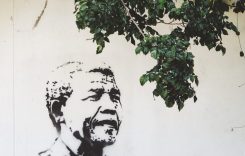When the Museum of Contemporary Art of Barcelona (Macba) was created in 1985, it had neither a building nor a collection. Thirty years later, the museum, which served to regenerate the heart of Raval, has more than 5,200 pieces. They are the sum of the pieces acquired by the consortium between the Generalitat, the Barcelona City Council and the Macba Foundation, as well as other works donated or deposited by private collections.
In figures 40% are owned by the Macba Foundation, 38% by the consortium, 15% by the Generalitat and the remaining 6% by the City Council. Yesterday, the National Council of Culture and Arts (Conca) during the presentation of the study Strategic evaluation of Macba 2015-2017, proposed that the entire collection be of public ownership “by virtue of the support that is provided to the equipment and the maintenance of the collection”. The request is surprising since the Macba Foundation was established in 1987 with the sole mission of nourishing pieces and expanding the museum’s heritage. Since 2016 he has purchased 37 of 18 artists.
According to Gemma Sendra and Pilar Parcerisas, vice president and member of the plenary body of the Generalitat, respectively, in the line that “the 2030 Museum Plan bets on a unique collection of public ownership and administered by the Generalitat of Catalonia.” The report, which analyzes one of the most difficult periods of the museum of general economic crisis change of direction.
After the controversial exhibition of the censored work in which King Juan Carlos I was sodomized, which ended with the relief of Bartomeu Marí by Ferran Barenblit, and strike of subcontracted personnel for months that led to the loss of visitors and of income during 2017, demands an increase in public contributions, currently 77% of the budget (11 million euros) and the growth of own resources ( 18%), in addition to increasing patronage (4.5%).
The two participated in a round table, which also included Ferran Barenblit and Josep Maria Carreté, director and manager of Macba, and was conducted by journalist Catalina Serra. Everyone debated some of the recommendations raised shortly before by Merce Gisbert, also a member of Conca.
Among them, that the Macba has to lead, in its “responsibility of national equipment”, the integration of the artistic community through synergies between artists and the program of the entity; overcome the elitism and distance between the public and the museum through a more didactic and clear discourse, with exhibitions of popular authors and themes.
Also the signing of agreements with private collections in the country, beyond the one that it maintains with the La Caixa Foundation; link more to the university and increase the public and visitors.
The manager Carreté said that although the 2022 Strategic Plan, approved in October 2017, had not been presented, “we have been applying it for a year”. On this new framework, the Conca defends in its report the reform of the existing space and the expansion in the Capella de la Misericòrdia, after the City Council ceded it in 2013 to gain 3,000 more square meters.
A controversial issue after the City Council offered this space committed to the Generalitat to build the CAP of Raval Nord. Despite the report, yesterday, Gisbert, during his presentation, recalled the need to have more space “to display the collection and not have it stored, in the chapel or elsewhere.”










